Last Updated on February 14, 2021
Gyoza [餃子] is a Japanese word for dumplings (potstickers.) Typically, there are a few ways of cooking gyoza in Japan, pan-fried or boiled, in some cases steamed. This particular recipe is boiled version called Sui-Gyoza [水餃子] which literally means boiled dumplings.
Sui-Gyoza
While the most popular way of eating gyoza is pan-fried (we have a recipe & post here), boiled gyoza is an another option and it’s relatively healthier since it’s not cooked in oil. The same ingredients for the pan-fried version works for boiled ones. Just make sure that you seal the wrapper very well otherwise the fillings will be spilling out in the boiling water!
The Wrapper
Now, for the wrappers, we use this vegan friendly version of wonton wraps at a local Wholefoods market. This particular product used to be made with eggs but now it clearly shows “VEGAN” on the package!! It’s a wonton wrapper so it’s not the traditional square shaped dumpling wrapper but it works just fine.
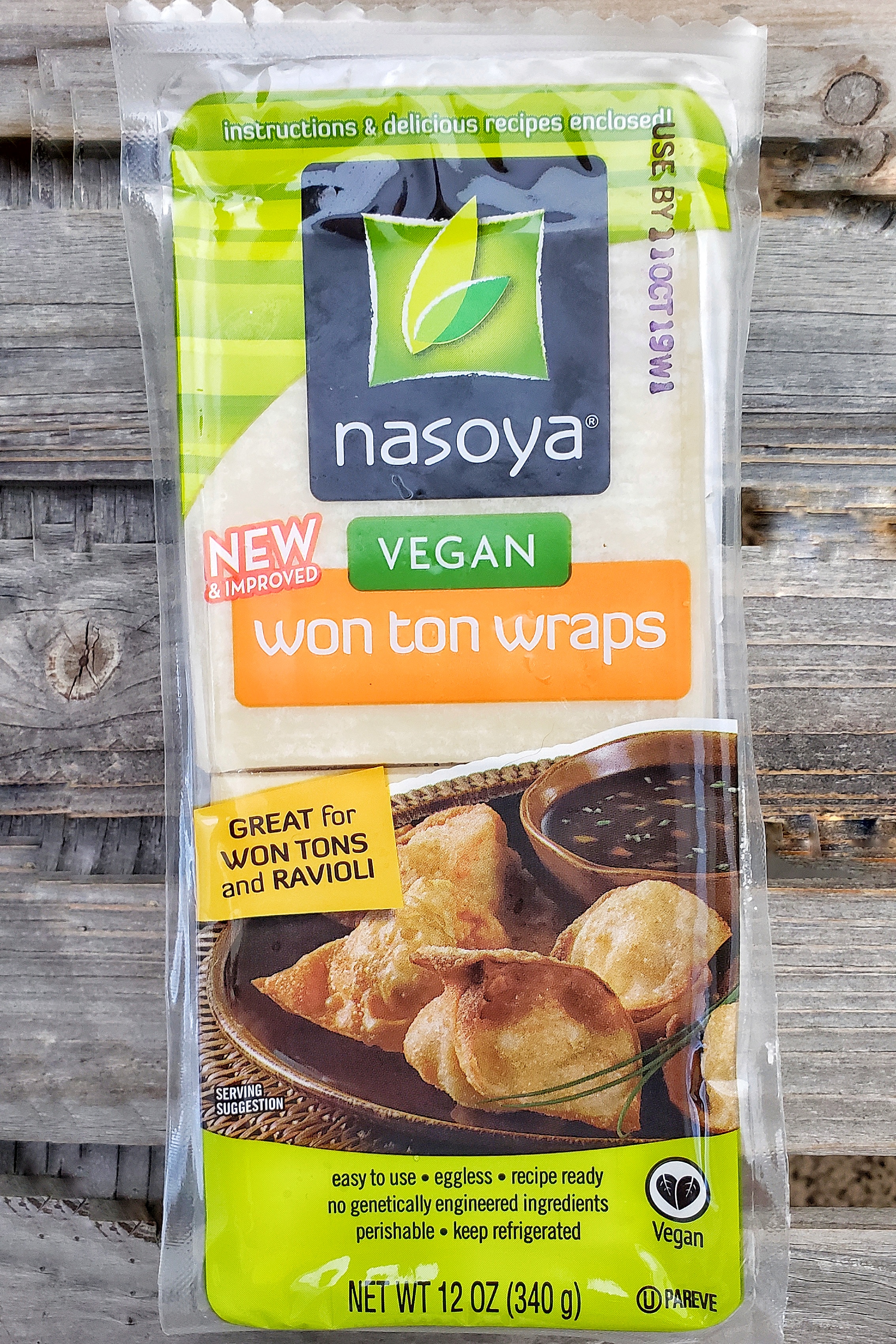
***We wanted to put a direct link to Nasoya’s website but somehow they only have the old version (non-vegan) on the product page. It’s a bummer.***
How to Fold
There are no rules as long as they are sealed well! This is how we do and super easy! No ripped wrapper guaranteed!
We just folded into a triangle shape then take the two bottom corners to fold over towards the center to make a shape like an open envelope!
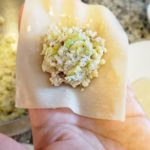
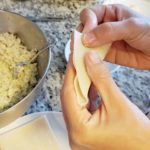
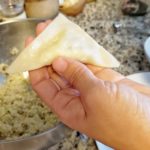
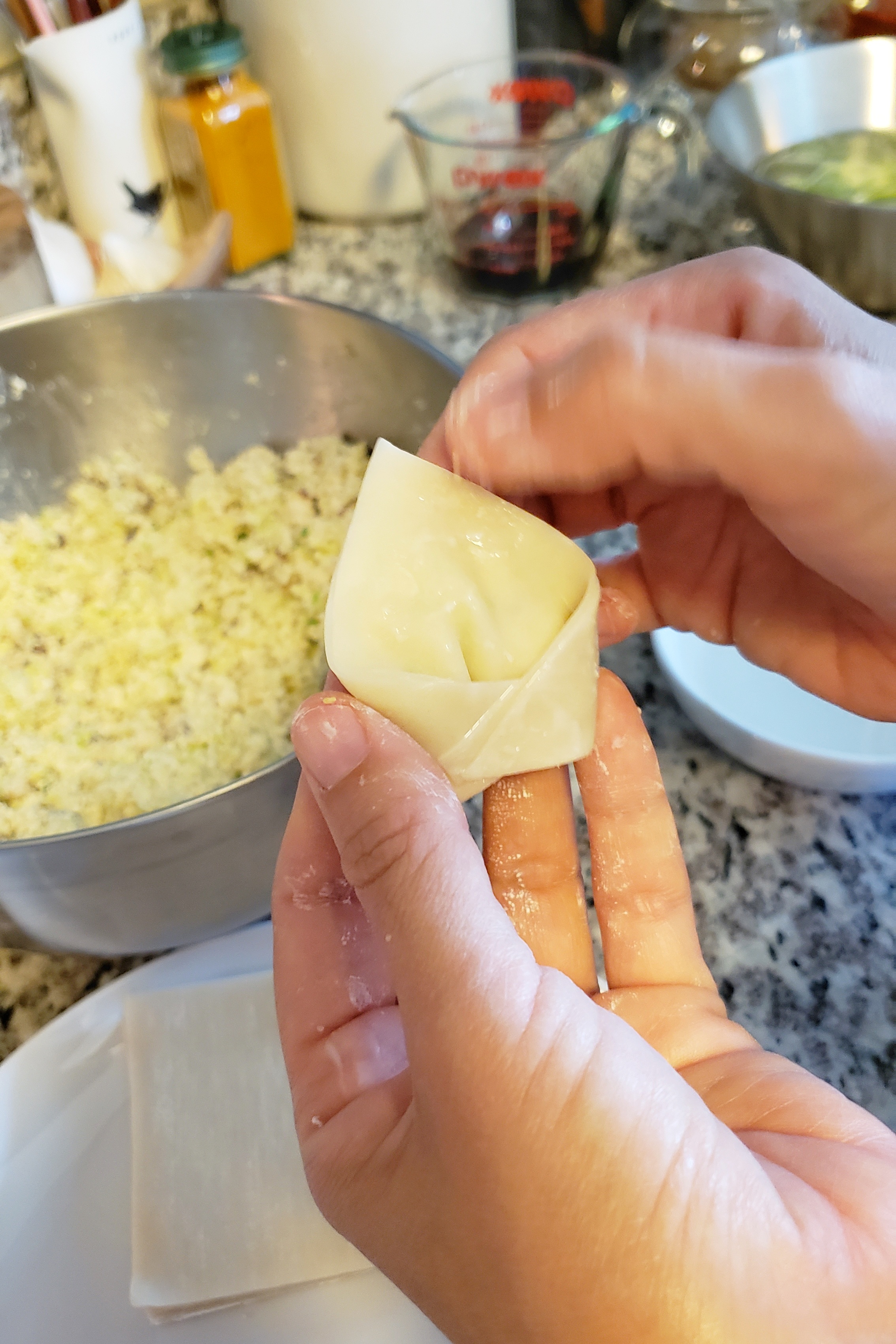
The Fillings
Just like the Pan-Fried Gyoza we use tofu to replace the meat part. If tofu is not your thing, feel free to replace with other veggies to make all-veggie gyoza. Unfortunately, we didn’t have chinese chives but if you happened to have it you should definitely use it! It gives a very distinctive garlicky & oniony flavor which makes the dumpling taste more traditional! Also, when it comes to certain Japanese dishes, we prefer using dried shiitake for more intensive flavor, aroma, and texture. In our opinion, it really makes a difference in a finished dish. The only downside is that it takes a bit longer for prepping. So, for whatever reasons whether dried ones are not available or you’d prefer less prep time, you can use fresh shiitake as an option. To go for a more traditional taste, we’d strongly recommend using dried ones.
Dipping Sauce
Our go-to dipping sauce for dumplings is a mix of soy sauce, rice vinegar, and Japanese chili oil (ra-yu). The Japanese way! In the U.S, you can buy something like this or another one like this. (Their product is spelled as La-Yu but it’s the same type of products.) We like 2:1 ratio of soy sauce to vinegar with a little drop of chili oil. If you like soy sauce only, vinegar only, chili oil only, go for it!
Boiled Gyoza (Dumblings)
Ingredients
For Soaking Shiitake
- 8 dried shiitake
- 2 1/2 cups water (for soaking)
The Rest
- 8 hydrated shiitake (or use fresh ones)
- 2 oz napa cabbage, core removed
- 1 block (16 oz) super firm tofu (typically sold vacuumed packed)
- 4 cloves garlic grated
- 2 inches ginger knob grated
- 1/2 tbsp toasted sesame oil
- 1 1/2 tsp salt
- 1/2 tsp white pepper
- 1/2 tbsp potato starch or corn starch
- 1 package (about 24 sheets) Nasoya Vegan Wonton Wraps (or any other brands)
- 2-3 tbsp grapeseed oil
- 1 scallion julienned (optional)
Dipping Sauce Suggestions
- Soy sauce only
- Soy sauce + rice vinegar 2:1 ratio
- Soy sauce + rice vinegar + Japanese chili oil (ra-yu)
Instructions
**If using fresh shiitake, skip to Step 3
- Put dried shiitake in a bowl then add water to soak. Put a tiny plate over to completely submerge them in the water (they will float!) Soak for 8-12 hours.
- After soaking, rinse and clean plumped shiitake under running water to remove unwanted particles trapped in the gill. Don’t waste the soaking water!! Save it as shiitake broth for later use---Place a paper towel on a fine mesh strainer over a bowl. Pour the soaking water slowly to strain and to catch the dirt. Store in the fridge or freeze.
- Cut the stems off from shiitake and mice the caps. Set aside.
- Boil water in a large pot. Cook napa cabbage for about 10 minutes. Use a colander to drain water. Rinse under running water to cool down. Squeeze out water and mince them. Squeeze once again to remove remaining water. Set aside.
- In a large prep bowl, use hands to crumble tofu into tiny bits. Then add shiitake, napa cabbage, garlic, ginger, toasted sesame oil, salt, white pepper, and potato starch (or corn starch.) Mix altogether with hands. Let it rest for 5 minutes.
- After resting, start wrapping. Prepare a small bowl with 2 tbsp of water. Also have a baking sheet with parchment paper (or on a large plate covered with plastic wrap) to array dumplings. Take a wonton wrapper on your palm, then place a small amount of tofu mixture in the center. Use your finger to apply water around the edges and fold in half to make a triangle. Next, apply water again on the two bottom corners then fold over towards the center to make a shape like an open envelope. Place the dumpling on the baking sheet then put a plastic wrap over to avoid drying out. Repeat the process.Tips: When you fold wonton wraps, don’t over fill and try not to have air pockets. Seal the edge very well to avoid the tofu mixture spilling out.
- Boil water in a medium pot. Once it’s boiling, reduce the heat to medium high. Gently drop dumplings one by one in the boiling water (cook 6-8 at a time.) Cook for 3-4 minutes. They will start floating up when they are ready. Scoop them out with a skimmer and transfer to a serving bowl. Repeat the process.
- Serve with a drizzle of toasted sesame oil and scallions on top (optional) along with a dipping sauce of your choice (see the suggestions in the ingredients section.)
Notes
- While dried shiitake has more flavor, feel free to replace with fresh ones as a quicker cooking option.
- Once package is open, wonton wrappers get dry pretty quick. Use them all instead of saving them for later. If there are any wrappers left, be creative and try to have fun wrapping some leftovers in the fridge.
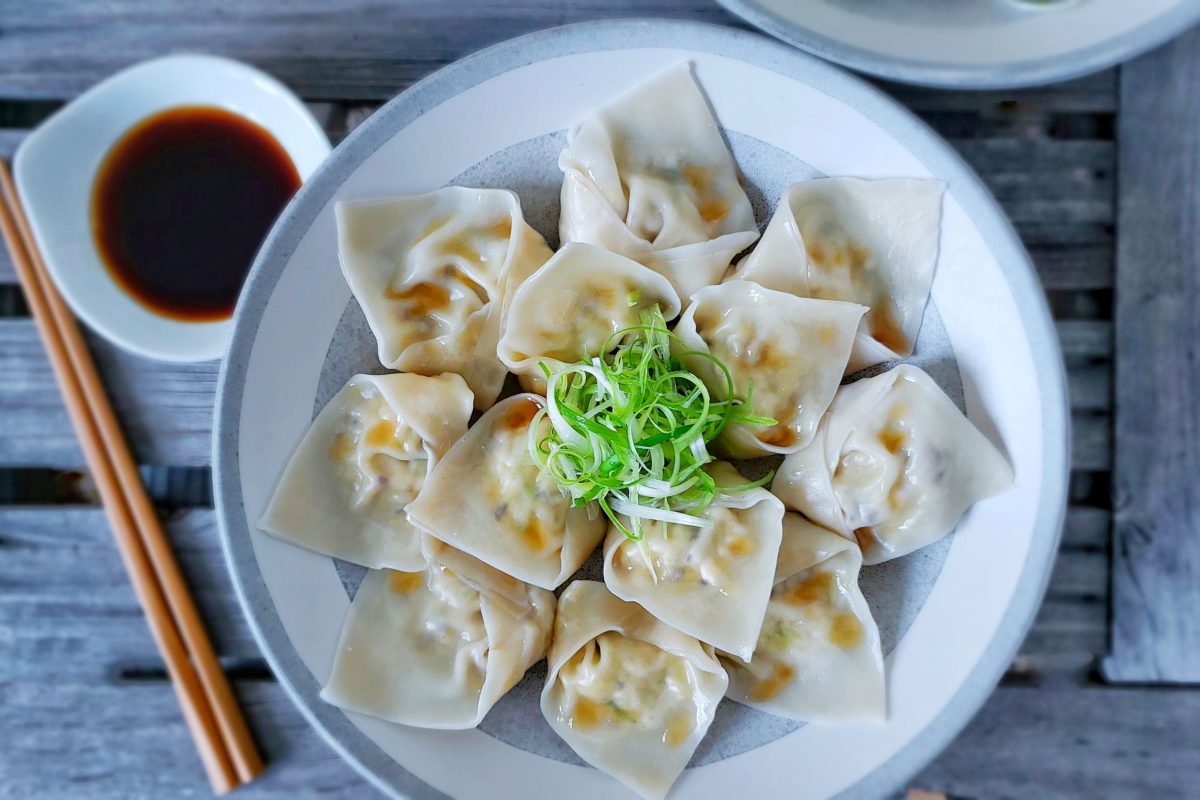

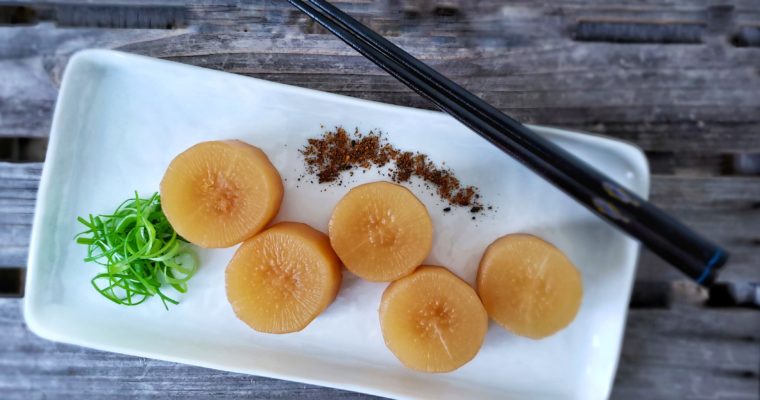
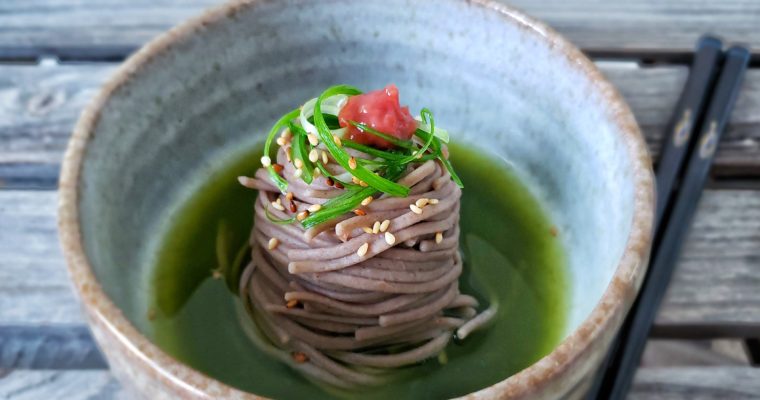


![LINGUINE WITH KALE & LEMON CAPER SAUCE
[ケール、レモン、ケイパーのリングイネ(ヴィーガン)]
By @plantbased_matters
Recipe at plantbasedmatters.net
Here is one of my best vegan pasta creations!
Linguine with Kale & Lemon Caper Sauce is a lemon-aroma-filled light pasta with kale and capers. Don't you love the combination of lemon and capers?
If you're new here, you may think I'm all Japanese/Asian food, but my non-Asian pasta recipes are hidden gems of my recipe collections 🤣 I can't believe how good the Linguine with Kale & Lemon Caper Sauce tastes especially with a drizzle of Meyer Lemon Olive Oil.
Enjoy!](https://plantbasedmatters.net/wp-content/plugins/instagram-feed/img/placeholder.png)